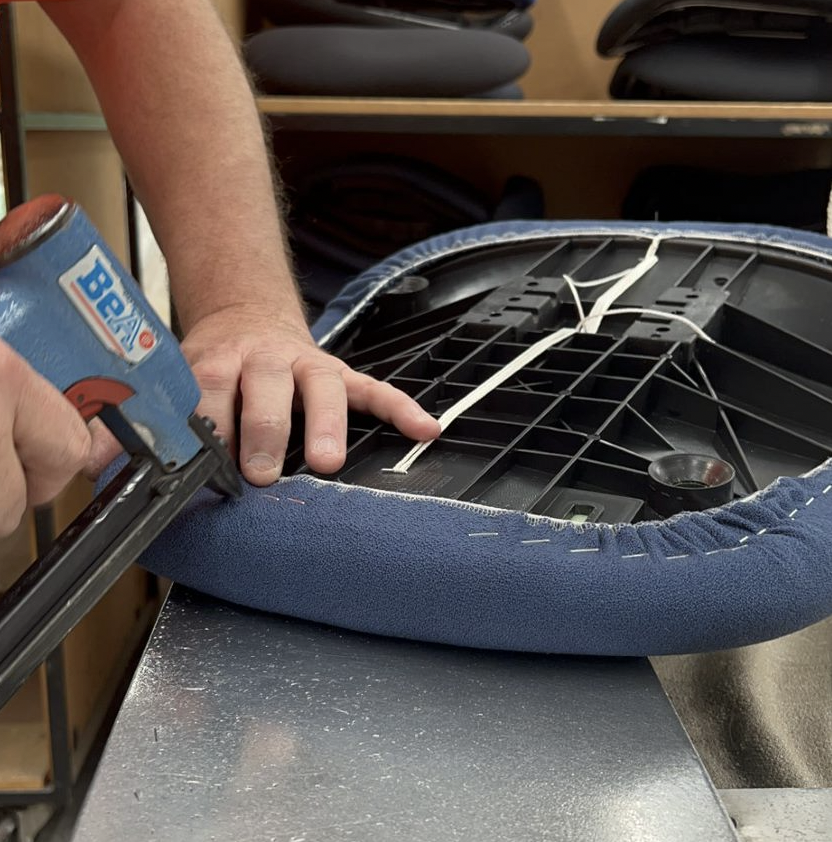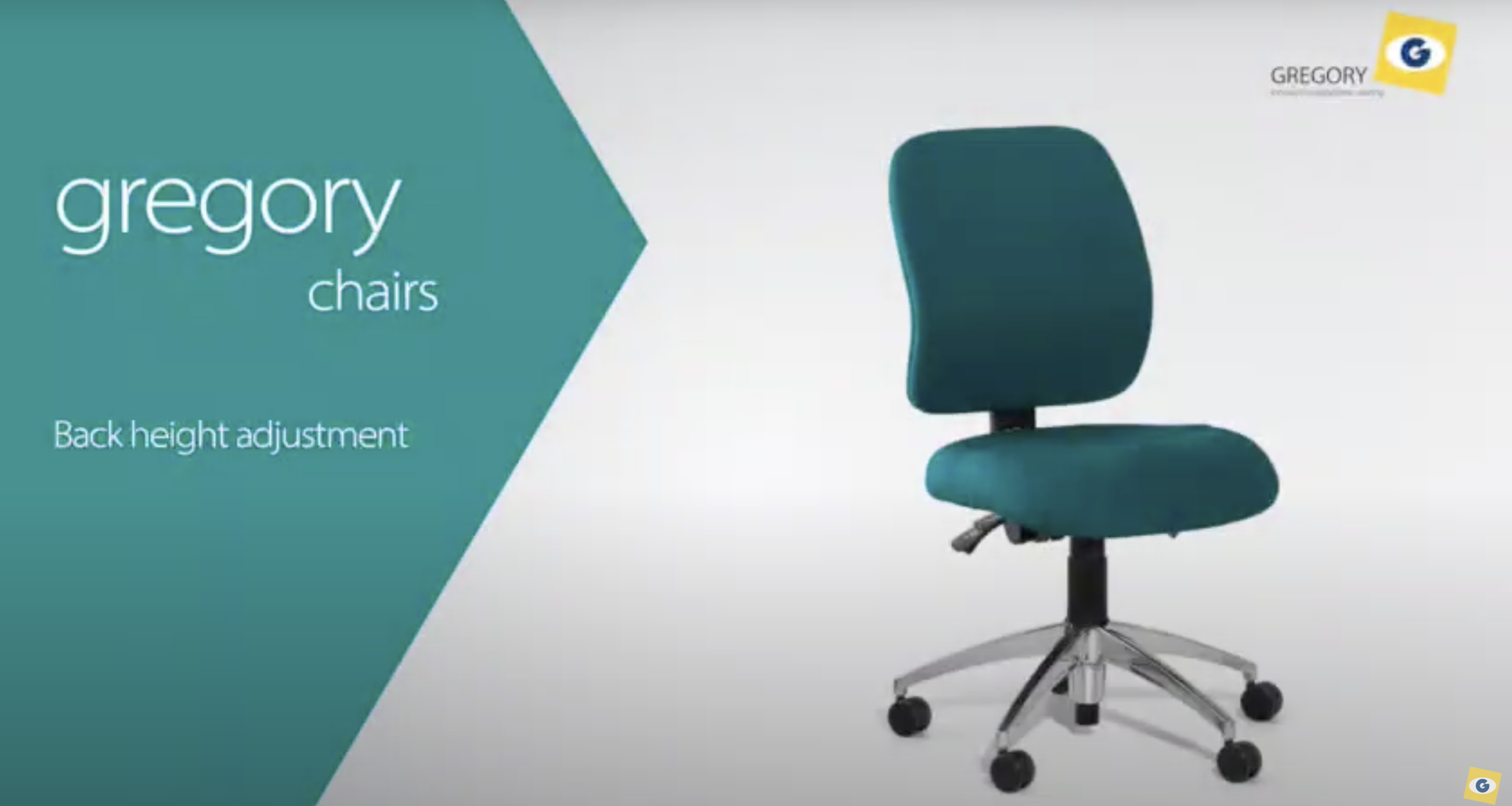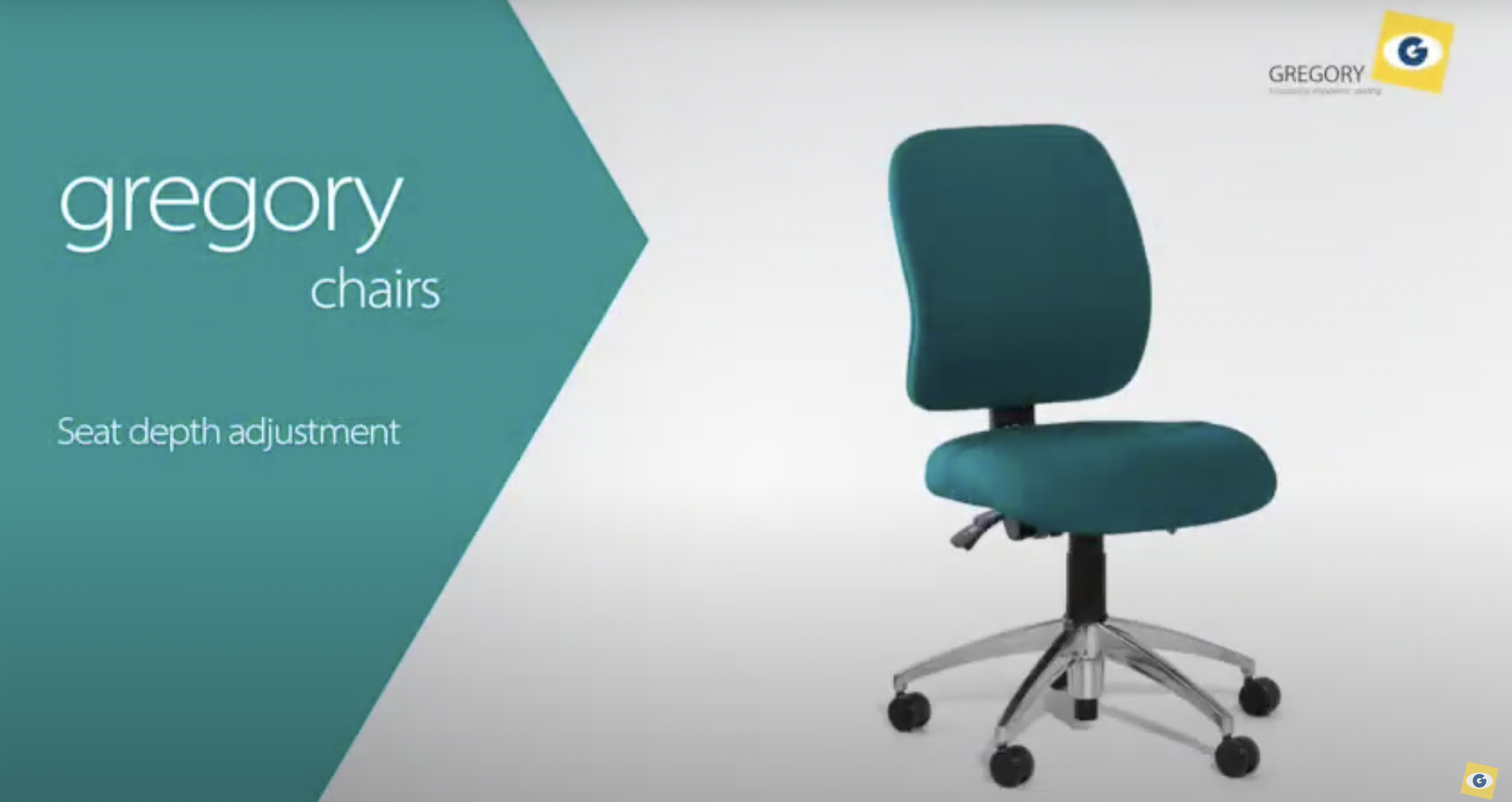Adjusting Your Gregory Chair
Adjusting Your Gregory Chair
Adjusting Your Gregory Chair
POSTURE
Why do People Have Poor Posture?
The spine is designed perfectly for normal standing posture. It is separated into five sections: the cervical, thoracic, lumbar, sacrum and coccyx. Each of these sections is split into vertebrae, the cervical has seven, the thoracic has twelve, the lumbar has five, the sacrum has five and the coccyx has four. The cervical, thoracic and lumbar create the natural ‘S’ curve in your spine which we associate with good posture. The cervical spine located in the neck has vertebrae which have been designed for good movement but are not designed to support a large amount of weight. The thoracic spine carries can support a medium amount of weight but is relatively inflexible as its mobility is affected by the rib cage, to which it is attached. The lumbar has been built for strength, absorb force and handle weight and is very mobile for forward and backward bending.
There are three primary reasons for poor posture:
- Forward Slip
- Inadequate Lumbar Support
- Unstable Forward Tilt

POSTURE ISSUES
Forward Slip
When seated for long periods of time, the muscles in your lower back may tire and this will cause you to slide forward on your seat. This forward slide places the spine in a ‘C’ shaped curve and can cause injury if the spine is exposed to this posture for extended periods of time. This posture causes fatigue and can create pressure on the lumbar and sacrum causing pain and injuries in the lower back. Your chair should support you in the ‘S’ shaped curve and provide a stable supportive seat so that you can avoid this. Gregory chairs have been designed with this in mind, our chairs provide a superior level of support so that you can maintain the ‘S’ shaped curve of your spine as well as a contoured seat with varying foam densities in our famous Dual Density Design so that the user does not slip forward.
POSTURE ISSUES
Inadequate Lumbar Support
Many offices provide their employees with chairs that provide them with inadequate lumbar support. These chairs fail to support the lower back which forces the muscles in the lumbar to work harder to support the rest of the spine in a seated position. Due to the lumbar working overtime to support the lower back, injury and lower back related pain soon follows. Gregory chairs come with a sculpted back with adjustable lumbar support. This means that a Gregory chair can support you no matter your height or position. Lack of lumbar support is one of the most common reasons for workers compensation surrounding back injuries.
Posture Issues
Unstable Forward Tilt
The forward tilt function in a chair is great for reading and writing. However, many people fail to use this function for these applications and will slide forward on their chair unsupported. The forward tilt is designed so that you can reach the task being completed at a closer proximity while still remaining supported by the back of the chair in the ‘S’ shaped position. Failing to use this tilt mechanism leads to a ‘C’ shaped curve in the spine which can cause injuries and pain in the lower back. Additionally, simply sliding forward in your chair means that you are not supported in your thoracic spine which can lead to hunching. Hunching can cause many issues with your thoracic and cervical spine. Gregory chairs have an easy to use forward tilt mechanism in place so that the user can be supported wholly while completing reading and writing tasks. Gregory chairs also have superior contoured thoracic spine support to take the pressure off of the users neck and shoulders.

